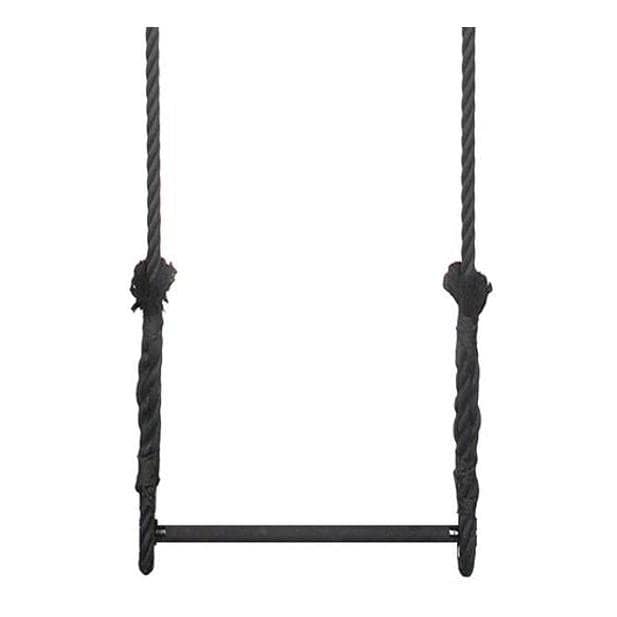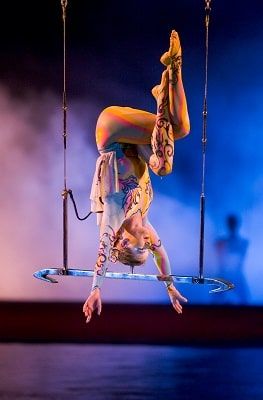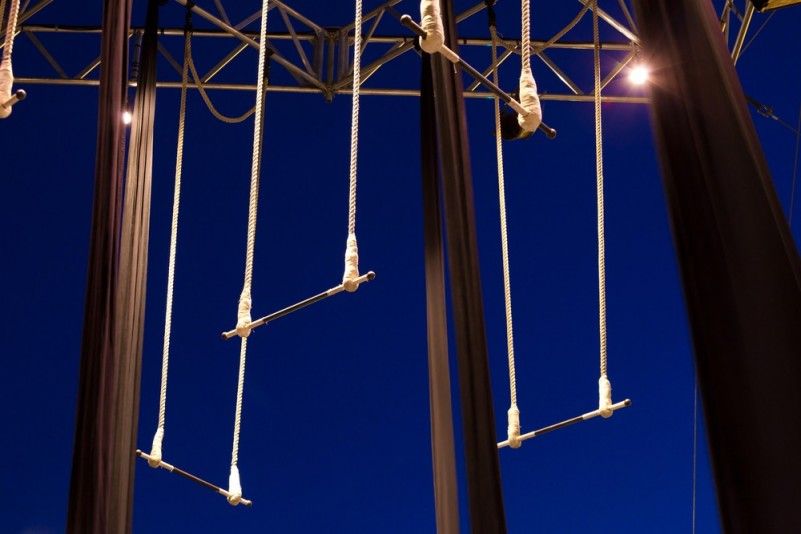Get ready to embark on a thrilling journey into the world of trapeze types. From static trapeze to dance, swinging, flying, multiple, and Washington trapeze, each variation offers unique challenges and artistic possibilities. Join us as we delve into the diverse realm of aerial equipment and discover the intricacies of these captivating trapeze types.
Types of Trapeze
All pieces of trapeze equipment consist of one or more horizontal bars which are hung from the roof with two vertical ropes attached on each side of the bar. The ropes might consist of cotton or cannabis usually with a wire inside them. If you’re interested in learning about the fascinating history of trapeze, check out our article on Trapeze Origins.
Ready to explore the world of trapeze? Equip yourself with top-quality trapeze bars, aerial silks, and hoops from Vertical Wise Shop. Perfect for beginners and advanced aerialists alike.
Static Trapeze
The static trapeze remains stable during performances, making it suitable for multiple performers. Acrobatic tricks can be executed over and under the bar, on the ropes, and with weight support.

Exclusive Offer: Enjoy a 10% discount on all trapeze purchases for our valued readers. Use code ‘TRAPEZE10’ at checkout to claim your savings. Click on the image to buy
Benefits of Static Trapeze
- Easier for beginners to learn: Static trapeze provides a solid foundation for beginners, allowing them to develop strength, coordination, and body awareness at a manageable pace.
- Teaches basic moves with minimal effort: Beginners can focus on learning fundamental moves, such as mounts, hangs, poses, and simple transitions, without the added challenge of managing swinging or momentum.
Tip: Start with static trapeze if you’re new to aerial acrobatics. It’s a great way to build strength and confidence.
Dance Trapeze
A sub-category of static trapeze, dance trapeze emphasizes artistic choreography and draws influence from contemporary dance. It is hung from a single point, forming a V-shape with the ropes.
Artistry in Dance Trapeze
- Focuses on artistic expression: Dance trapeze allows performers to explore fluidity, grace, and emotional storytelling through their movements.
- Incorporates graceful movements and flow: Performers combine elements of dance and aerial acrobatics to create visually captivating routines with seamless transitions.
Tip: If you have a background in dance or are interested in exploring the expressive side of trapeze, dance trapeze can be a wonderful choice.
Swinging Trapeze
Swinging trapeze combines skills used in static trapeze but with the added challenge of swinging back and forth. The performer’s body weight initiates the swinging motion, making it more difficult to execute moves.
Skills and Challenges
- Requires coordination and timing: Performers must synchronize their movements with the swinging motion, maintaining control and timing for precise execution.
- Enhances control and fluidity in movement: Swinging trapeze challenges performers to adapt their technique to the dynamic nature of the apparatus, developing a greater sense of body control and flow.
Tip: Familiarize yourself with static trapeze before attempting swinging trapeze. Building a strong foundation in static trapeze will help you transition to the swinging aspect more effectively. Safety first! Ensure you’re practicing safely with our crash mats designed for aerial acrobatics. Visit Vertical Wise Shop and use code ‘CRASH10’ for a 10% discount on all crash mats.
Flying Trapeze
In flying trapeze, two aerialists use two bars. The flyer swings and jumps to the other bar, while the catcher catches the flyer’s arms. This type of trapeze involves dynamic acrobatics and collaboration.

The Thrill of Flight
- Exhilarating and adrenaline-pumping: Flying trapeze offers a thrilling experience as performers soar through the air, executing daring tricks and mid-air tricks.
- Showcases daring tricks and mid-air tricks: Flying trapeze routines often include impressive flips, twists, and catches, highlighting the acrobatic prowess of the performers.
Tip: Flying trapeze requires specialized training and safety precautions. It is recommended to learn from experienced instructors in a controlled environment.
Multiple Trapeze
Multiple trapeze configurations involve two or more trapezes joined together. They can be arranged side by side or vertically. This type offers versatility and variety in performances.
Versatility and Variety
- Allows for complex group choreography: Multiple trapeze setups enable performers to create intricate routines that involve synchronized movements, lifts, and unique formations.
- Offers opportunities for unique and synchronized movements: Performers can explore innovative shapes, transitions, and interactions between the trapeze bars, creating visually stunning and captivating performances.
Tip: Multiple trapeze requires advanced skills and coordination. It is typically explored by experienced aerialists or within professional performance groups.
Washington Trapeze
A variation of static and swinging trapeze, the Washington trapeze features small platforms attached to the bar. Acrobats can perform upside-down stunts using their hands or head.

Photo credits: https://www.richasi.com
A Unique Variation
- Incorporates inverted stunts and unique platform usage: The Washington trapeze allows performers to showcase their strength and balance by executing gravity-defying stunts while standing upside down on the platforms.
- Heavier and distinct from other trapeze types: The added weight of the platforms and the unique positioning create a distinct challenge and aesthetic for performers.
Note: Washington trapeze requires advanced skills and specialized training due to the added complexity and increased risk associated with inverted stunts.
Epilogue
As we conclude our exploration of trapeze types, we’re left in awe of the incredible artistry and skill displayed by aerialists on these dynamic apparatuses. Whether it’s the stability of static trapeze, the grace of dance trapeze, the excitement of swinging and flying trapeze, or the versatility of multiple trapeze, each variation brings its own allure to the world of aerial performance. So, next time you witness a mesmerizing trapeze act, take a moment to appreciate the mastery behind these incredible trapeze types. Celebrate your love for aerial arts with our exclusive mugs and notebooks designed for circus and aerial enthusiasts. Check them out at our Etsy shop!
Note: The article covers the commonly known trapeze types. However, it’s worth noting that within the world of circus and aerial arts, there may be additional variations or unique interpretations of trapeze equipment that are specific to certain performers, shows, or training methods. These variations might not be as widely recognized or standardized as the ones mentioned in the article.








Thanks for one’s marvelous posting! I genuinely enjoyed reading it,
you might be a great author.I will always bookmark your blog and will often come
back in the future. I want to encourage that you continue your great job, have a nice weekend!
Thank you so much for your kind words and for taking the time to read and appreciate our post. We’re thrilled to hear that you enjoyed the content – your support means the world to us! Wishing you a fantastic weekend as well! Your positive feedback has already made our day brighter.